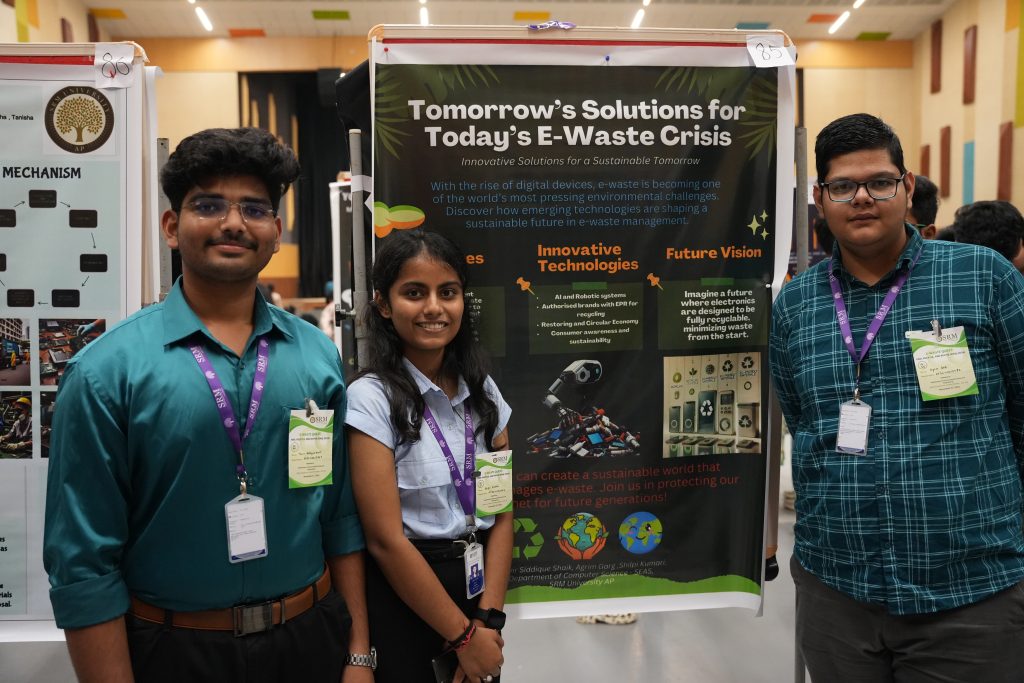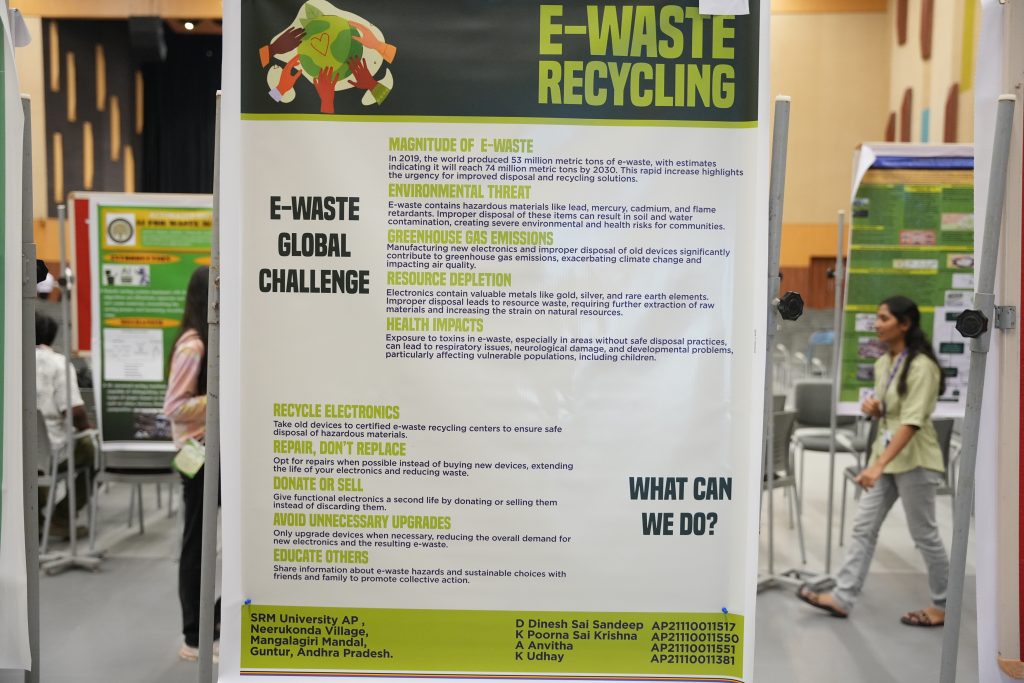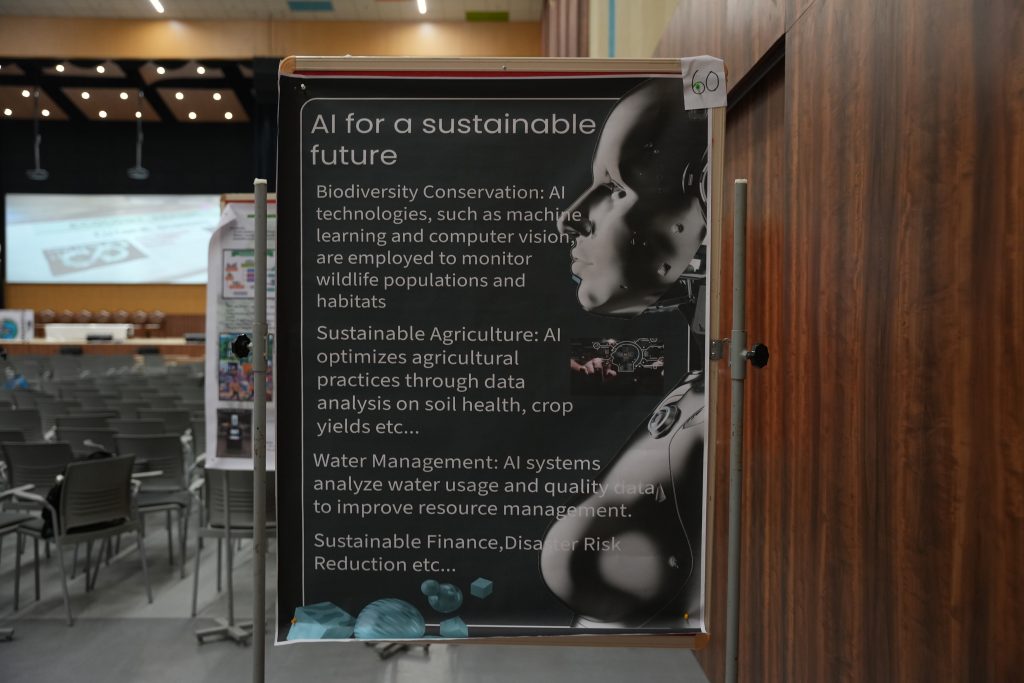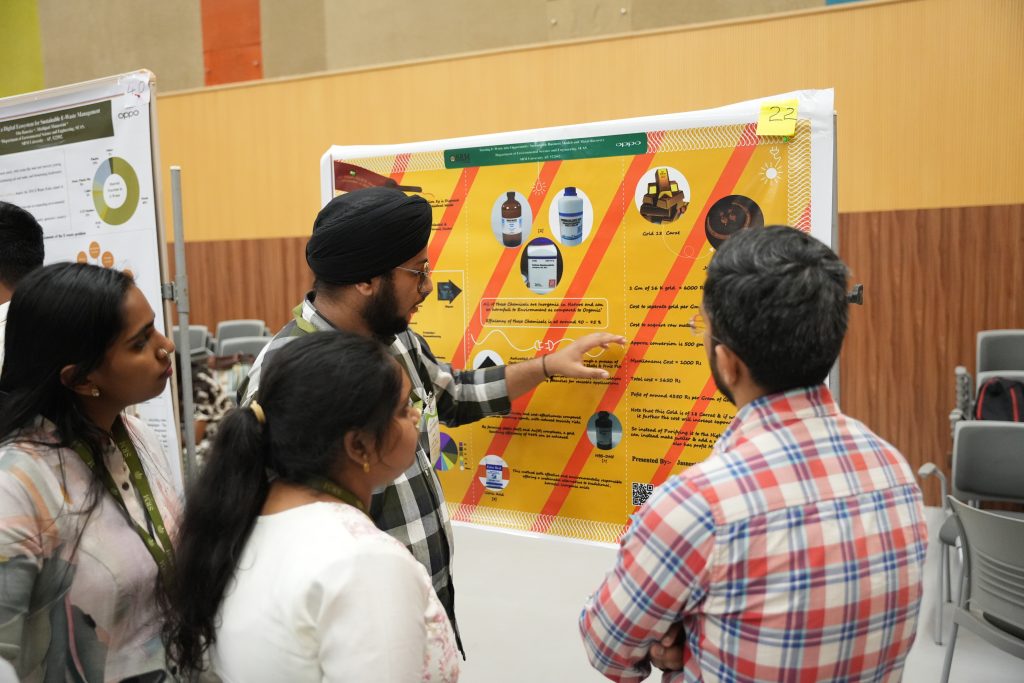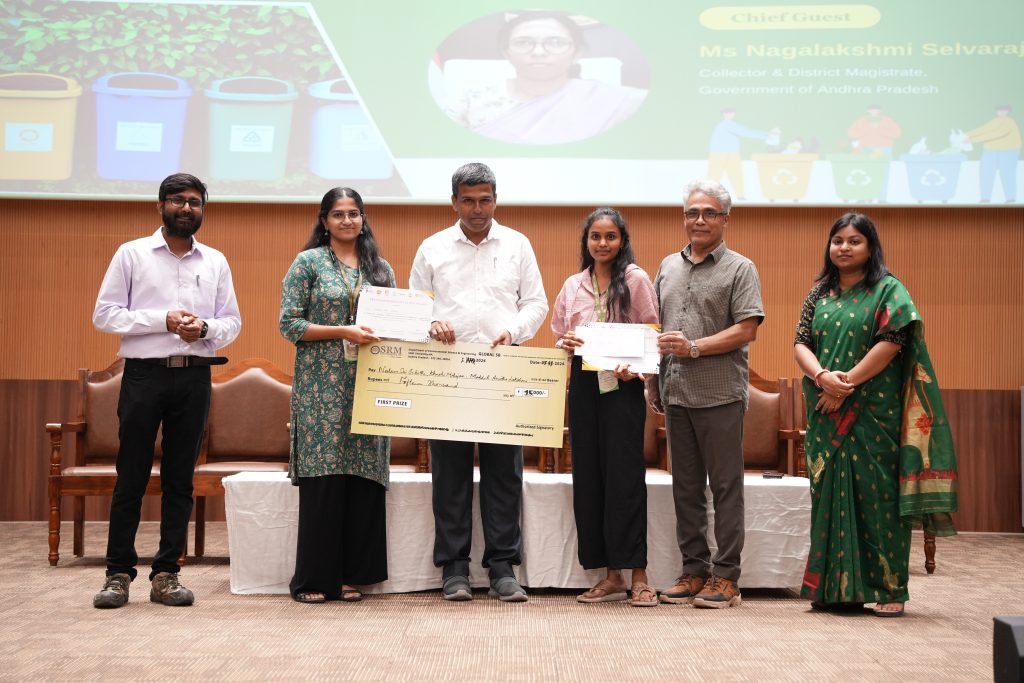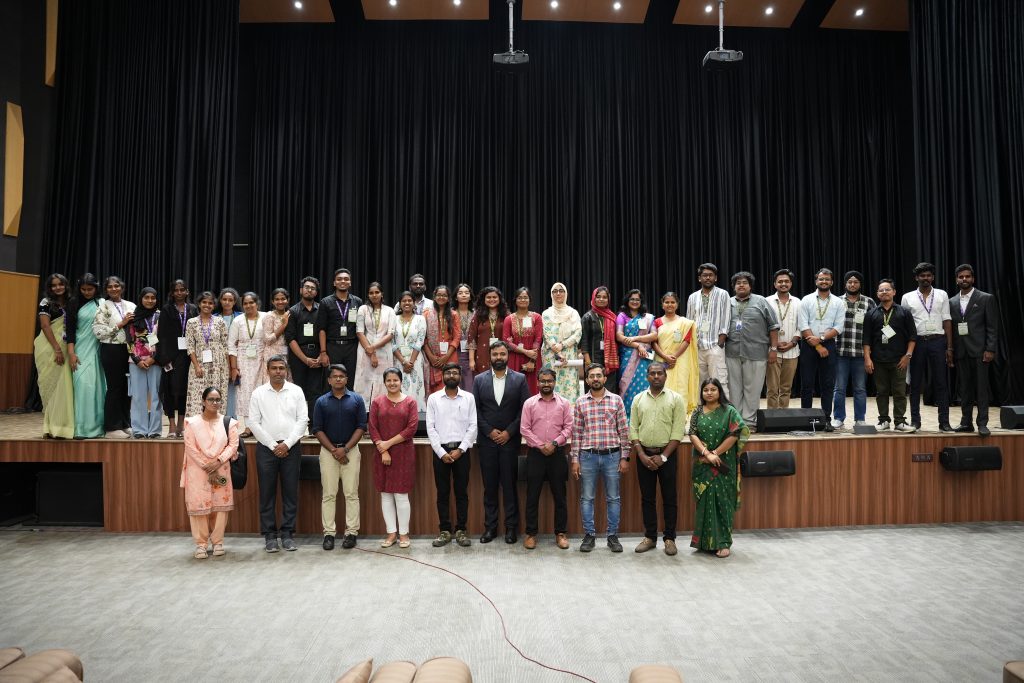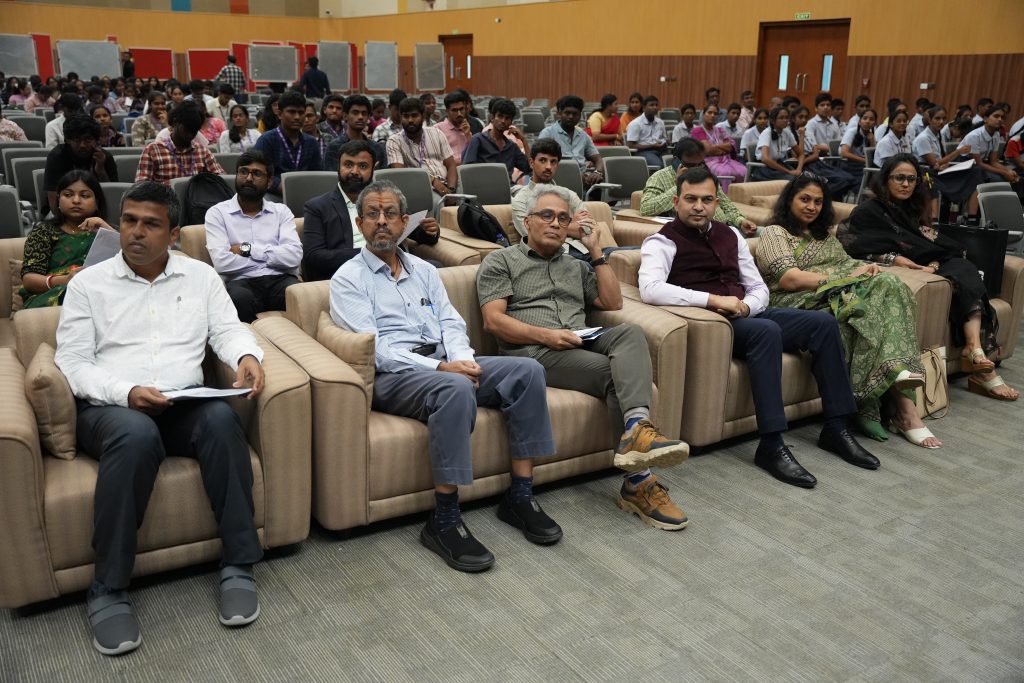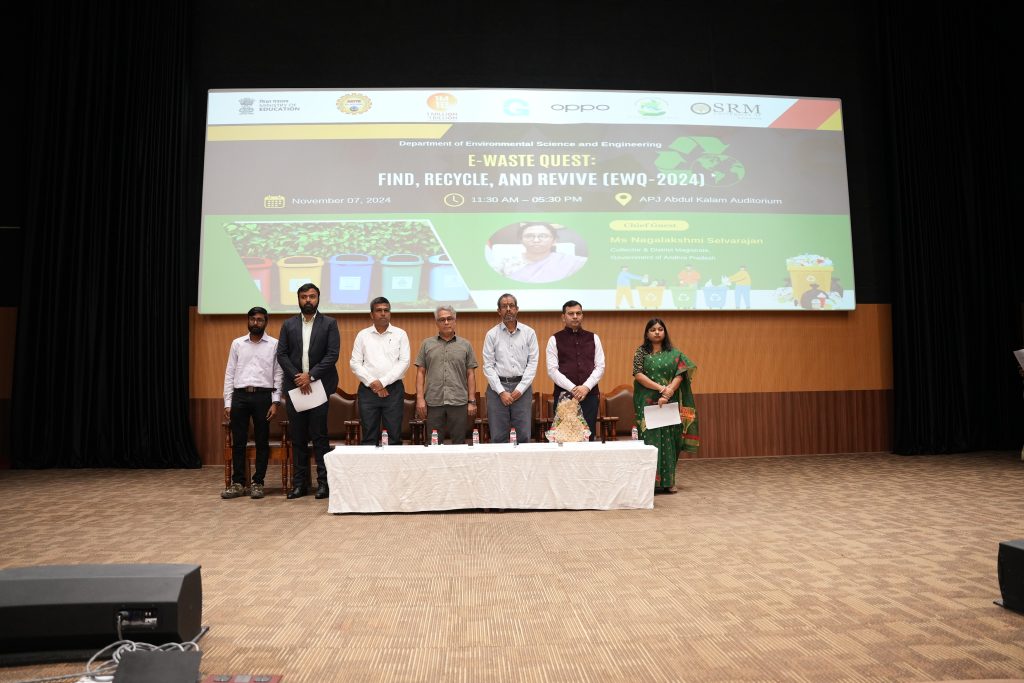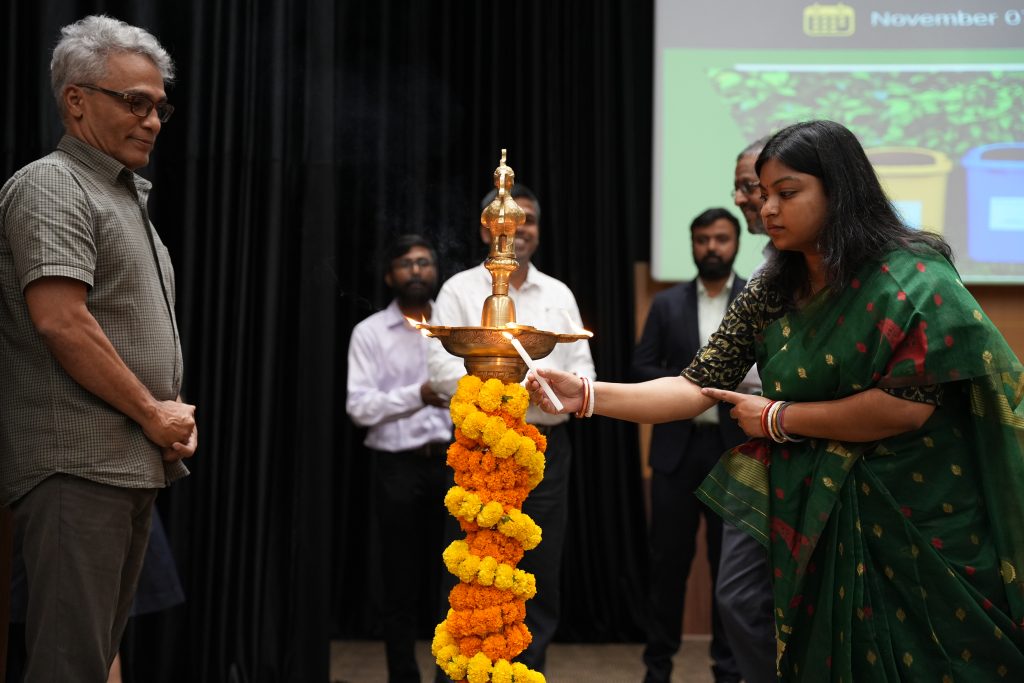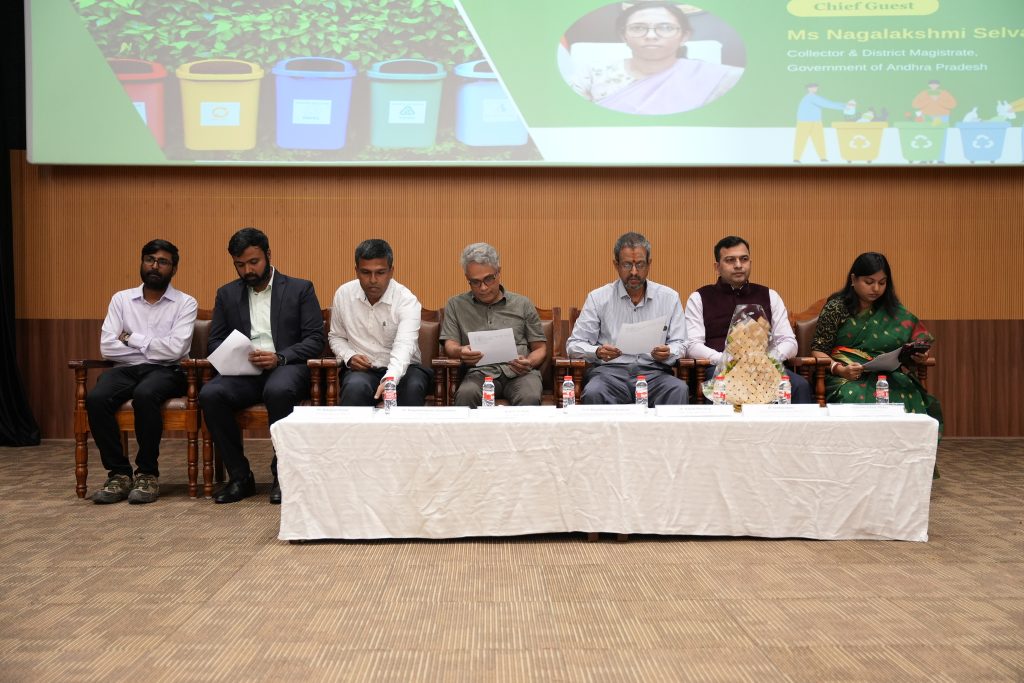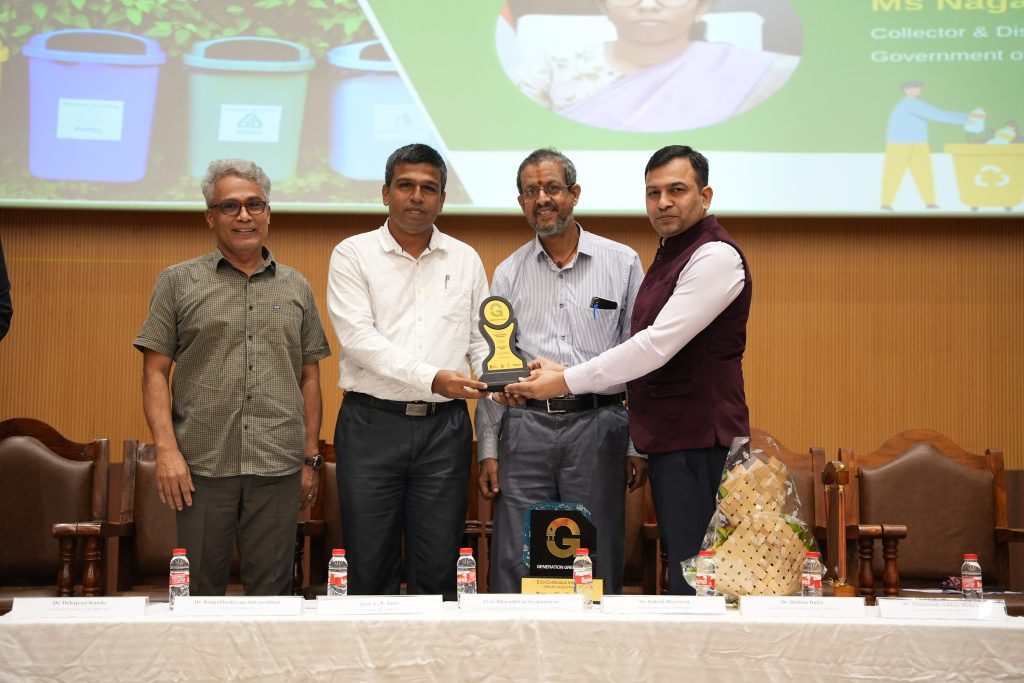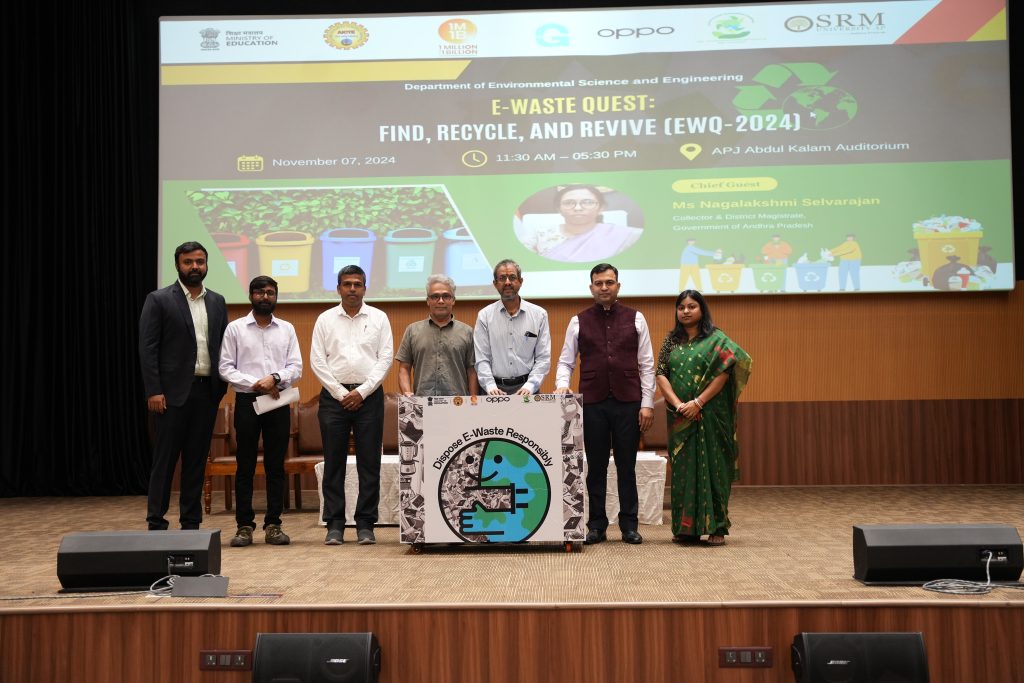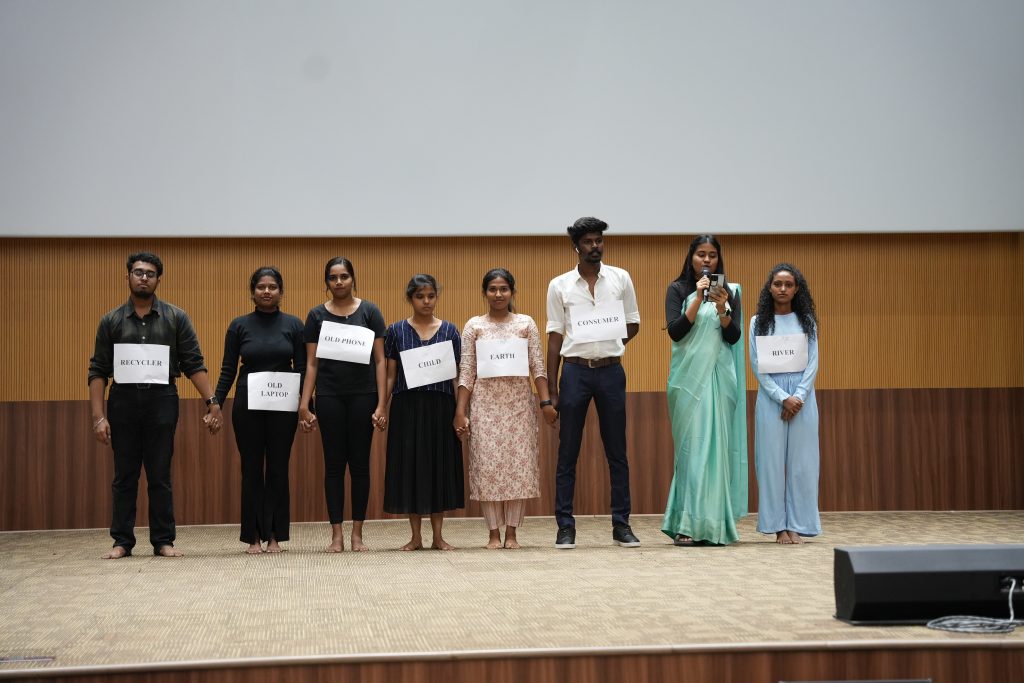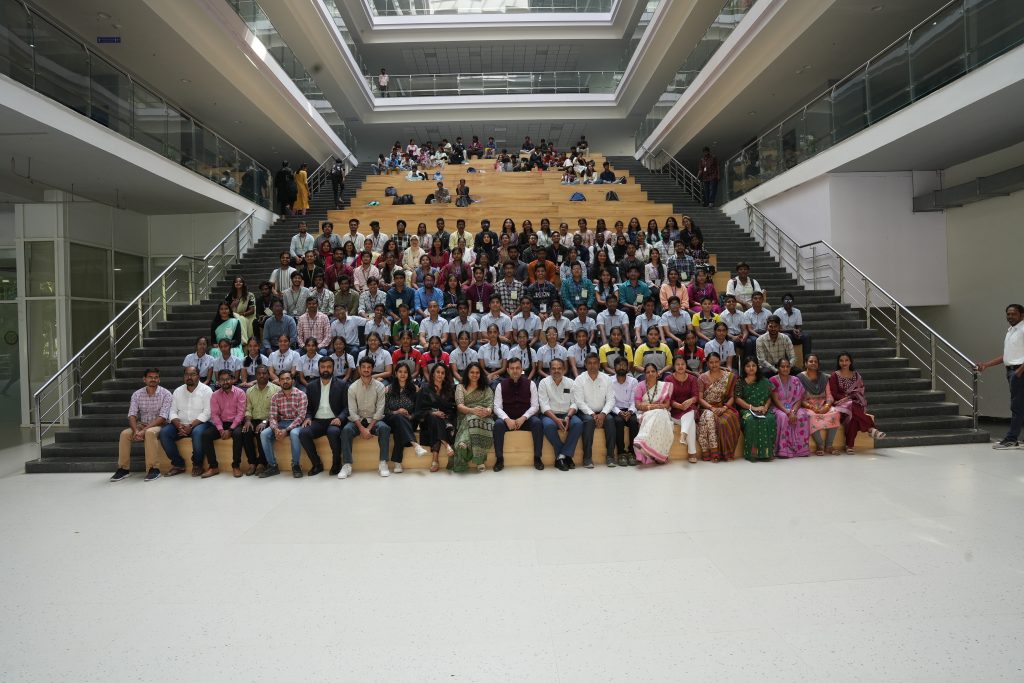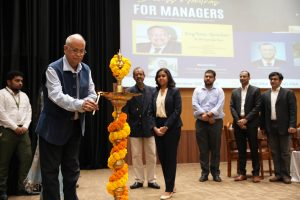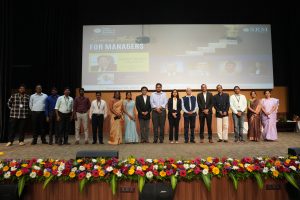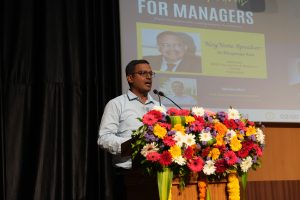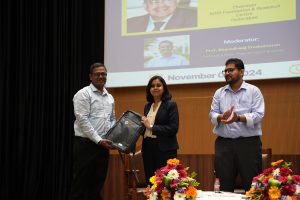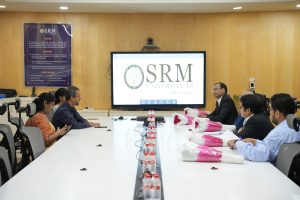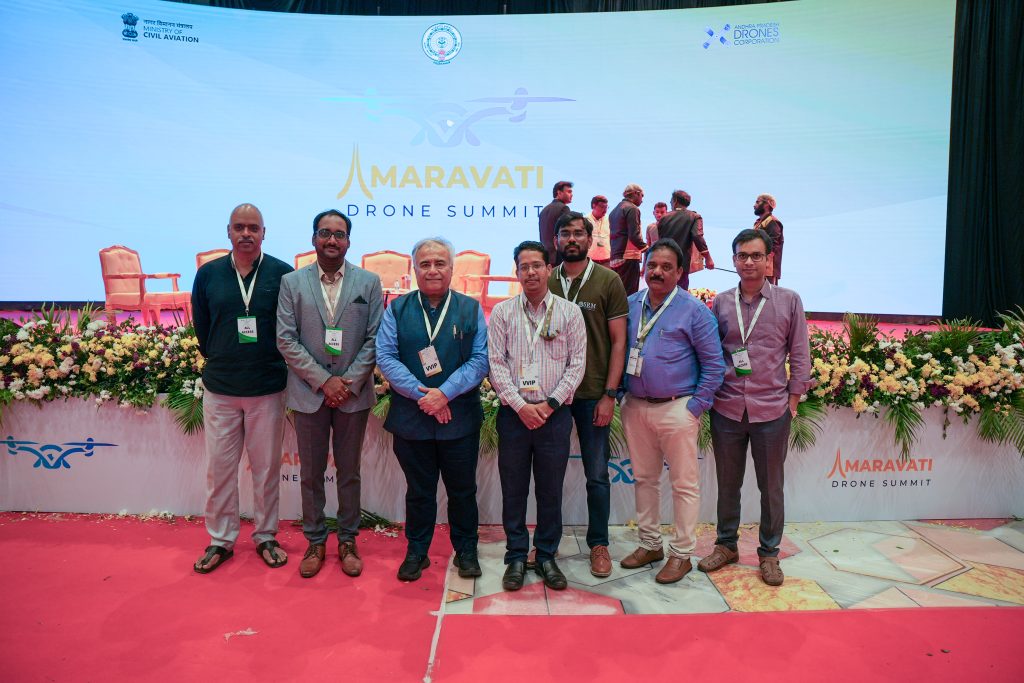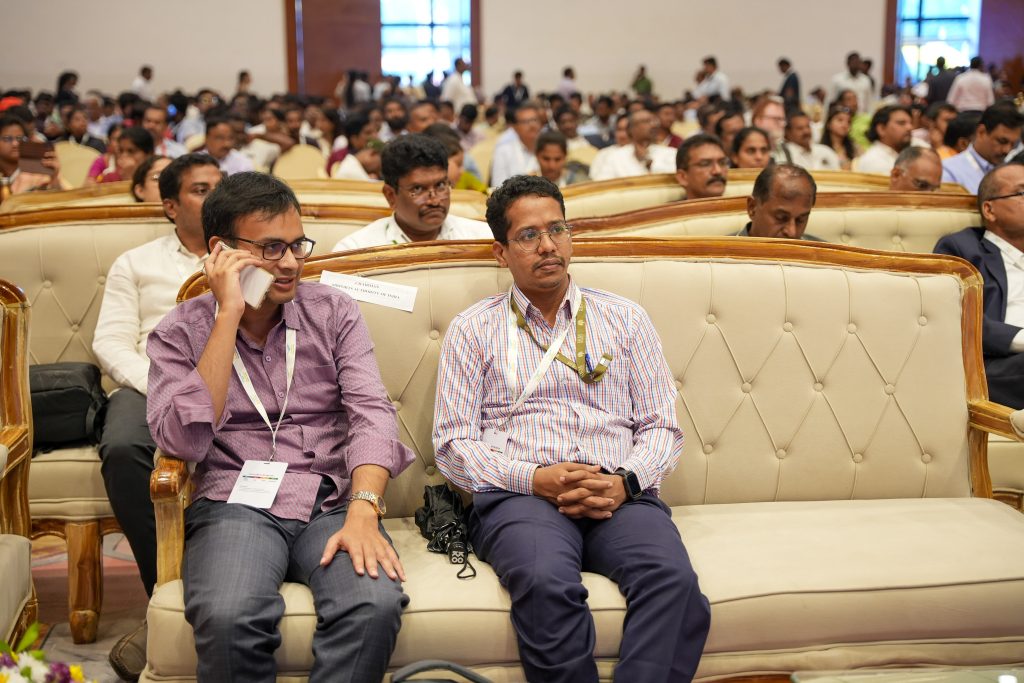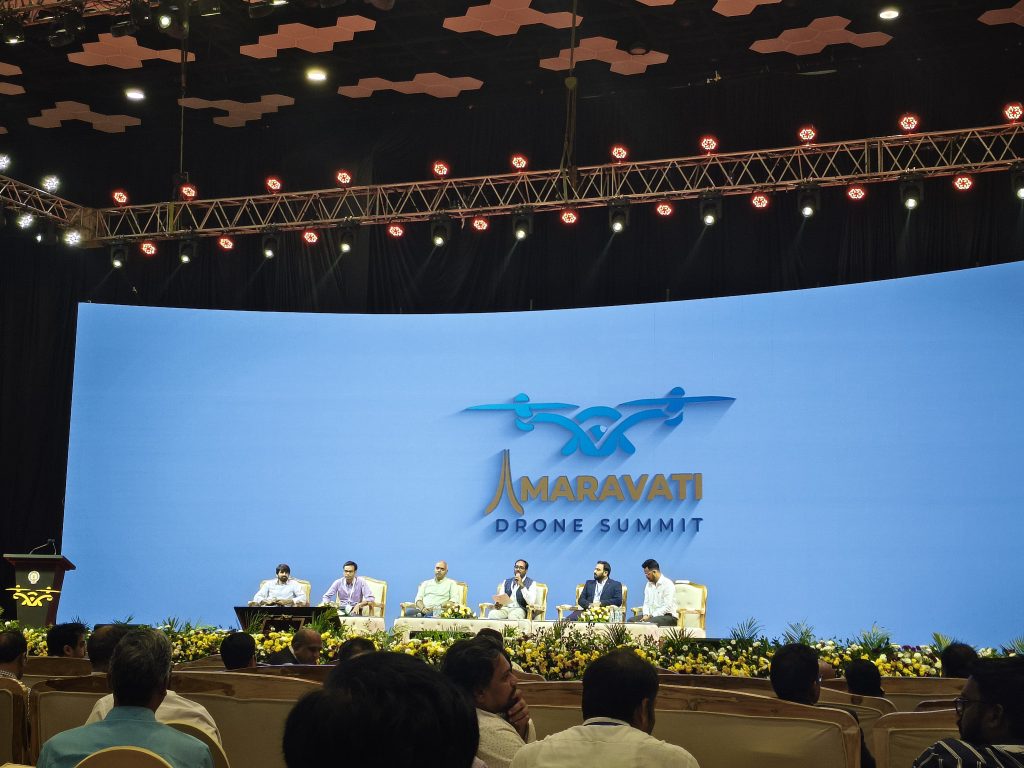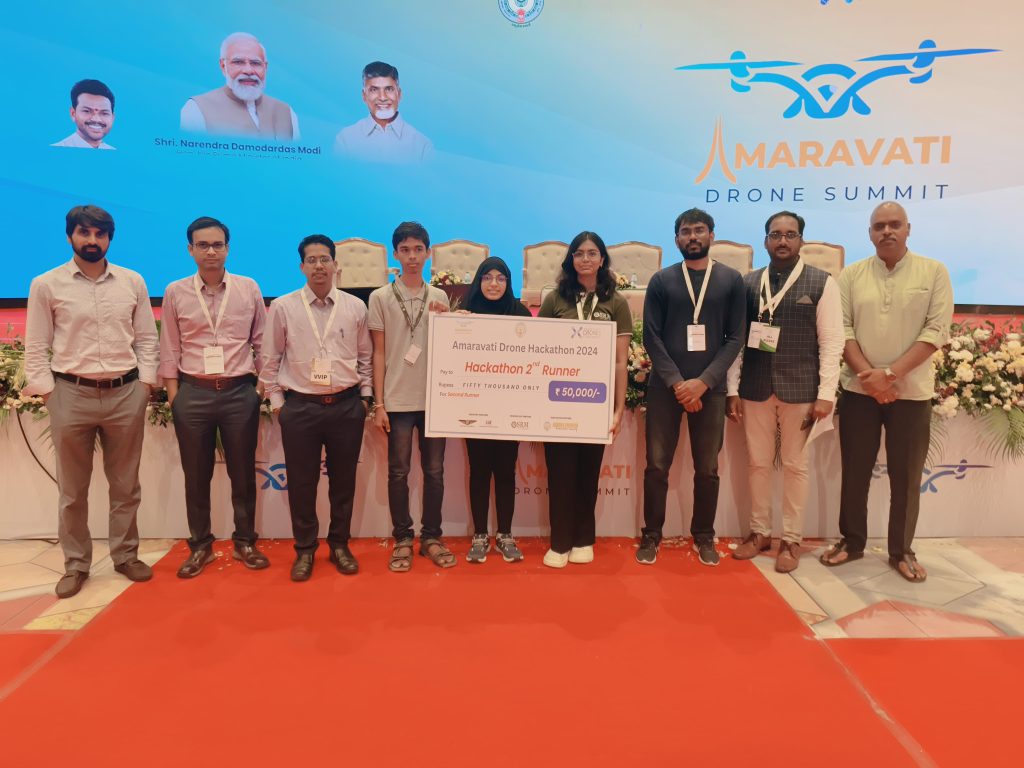SRM AP Joins OPPO India in its Clarion Call against E-Waste
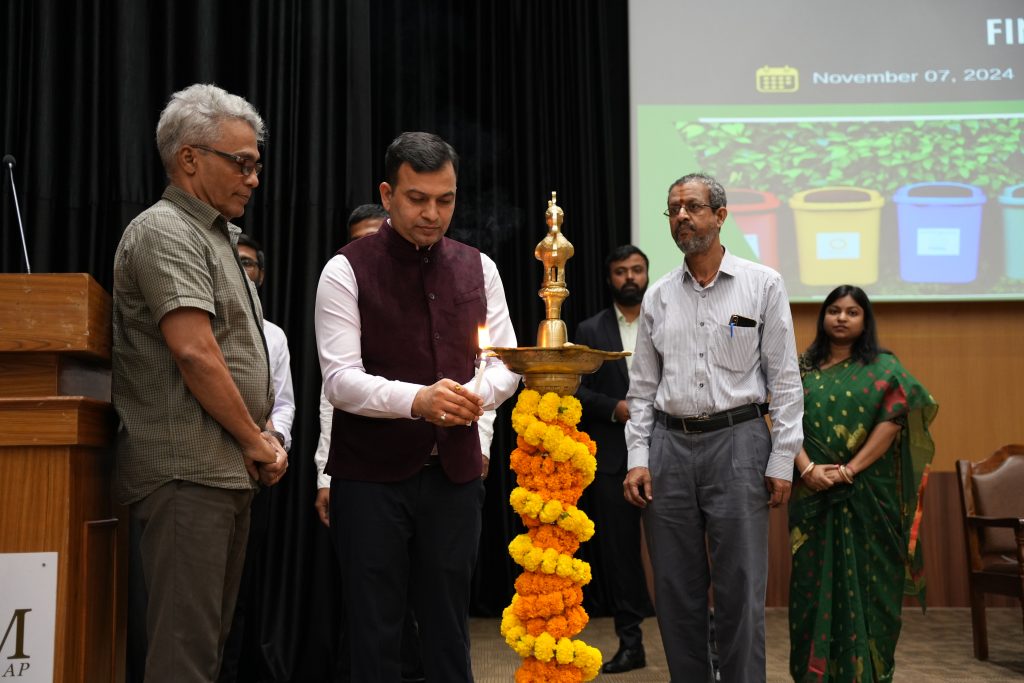 SRM University-AP, in collaboration with OPPO India and the All-India Council for Technical Education (AICTE), is partnering to support “Generation Green”—a national-level initiative aimed at empowering youth to become advocates of sustainability through green skills and actionable commitments. The first phase of the campaign saw AICTE and OPPO India partner with 1M1B to promote sustainable practices among youth by offering green internships to students across India. Launched on July 08, 2024, by AICTE Chairman Prof. T G Sitharam, in the presence of Dr Buddha Chandrasekhar, CCO, AICTE, over 9,000 students from more than 1,400 institutions applied to join the noble venture.
SRM University-AP, in collaboration with OPPO India and the All-India Council for Technical Education (AICTE), is partnering to support “Generation Green”—a national-level initiative aimed at empowering youth to become advocates of sustainability through green skills and actionable commitments. The first phase of the campaign saw AICTE and OPPO India partner with 1M1B to promote sustainable practices among youth by offering green internships to students across India. Launched on July 08, 2024, by AICTE Chairman Prof. T G Sitharam, in the presence of Dr Buddha Chandrasekhar, CCO, AICTE, over 9,000 students from more than 1,400 institutions applied to join the noble venture.
The second phase of the ‘Generation Green’ campaign witnessed SRM AP’s partnership with OPPO and AICTE for educating youngsters about the need for responsible electronic waste management. In alignment with this initiative, the varsity conducted E-Waste Quest 2024, wherein it enlightened students on the issue of waste management of discarded electronic items such as mobile phones, chargers, batteries, and wires. With over 400,000 pledges to date, the campaign now targets one million youth engagements by the end of 2024 to create a lasting impact on e-waste management and environmental preservation. On the occasion OPPO India awarded the SRM University with the title of Eco-Conscious Institution, reflecting the varsity’s commitment to sustainability.
Pro-Chancellor Dr P Sathyanarayanan and Vice Chancellor Prof. Manoj K Arora congratulated the Department of Environmental Science and Engineering for their dedication and commitment to this cause, while Prof. Bharadhwaj Sivakumaran, Dean-Paari School of Business and the officiating Vice Chancellor, emphasised, “Initiatives like the Generation Green Campaign illustrate how small, purposeful actions can catalyse significant change toward a sustainable future.”
Prof. C V Tomy, Dean of the School of Engineering and Sciences, addressed the gathering with an inspiring call to action, stating that every school must have an e-waste collection centre. He stated, “This effort not only promotes responsible disposal but also opens doors to entrepreneurial opportunities, instilling a mindset of sustainability and innovation among students.”
During the launch of the E-Waste Quest 2024, Mr Rakesh Bhardwaj from OPPO India stated, “Today marks a pivotal moment in our collective commitment to a sustainable future. This initiative encourages our youth to take ownership of their role in environmental stewardship.” Dr Rangabhashiyam Selvasembian, Associate Professor and Head-Department of Environmental Science and Engineering, stated, “A motivated and informed generation has the power to reshape our planet. If we do not take responsibility for its protection, no one else will.”
Dr Vinayak Kalluri, Dean-Academic Affairs, implored the youth to fight together in this crusade to save Mother Nature from the horrors of e-waste, noting, “The transition for a sustainable future arises from engaging in small acts of sustainability that result in big transformations.” Additionally, Collector and District Magistrate, Ms Nagalakshmi Selvarajan shared a meaningful message on the importance of community involvement. The E-Waste Quest 2024 served as a powerful reminder that collective efforts help shape a greener future where progress and sustainability go hand in hand.
- Published in Departmental News, ENVS News, News
Understanding the Impact of Sundarbans Mangroves on Global Oceanic Carbon Budgets
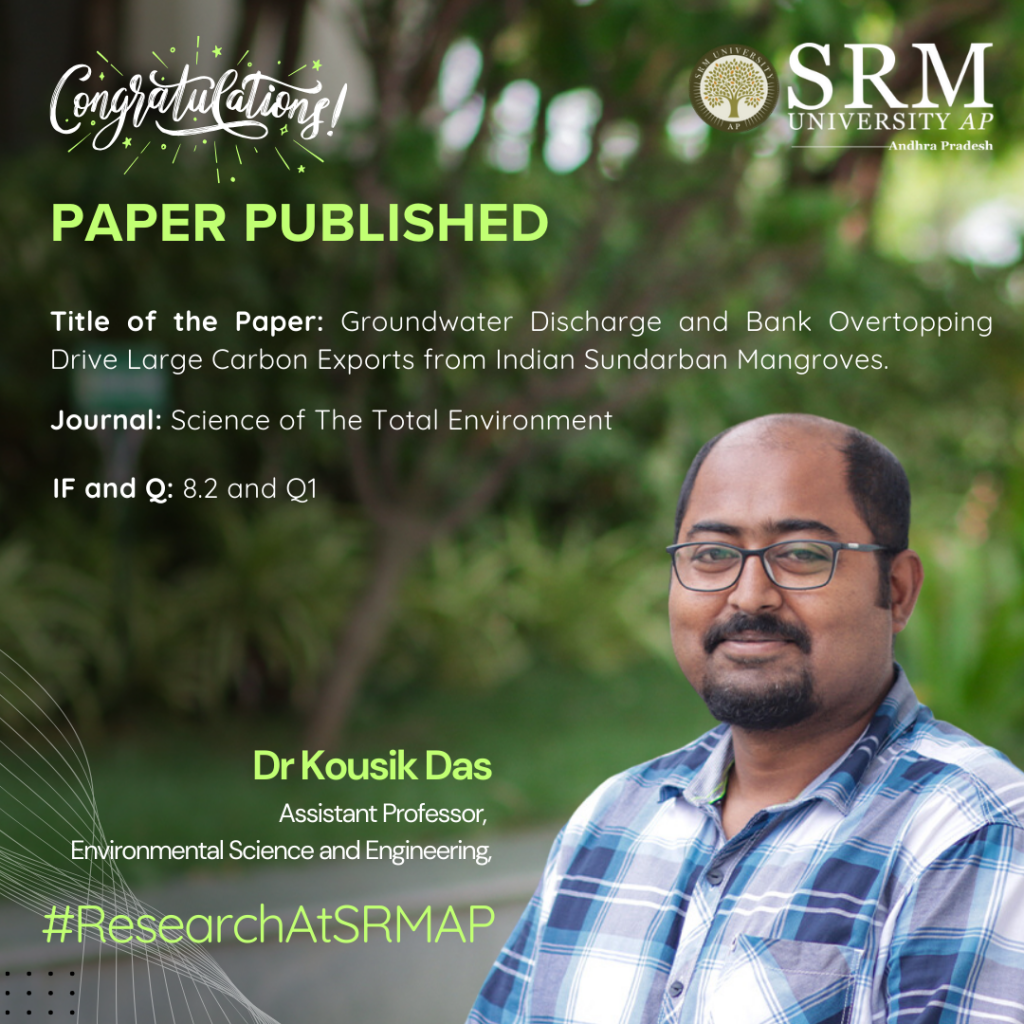
The Sundarbans represent the largest mangrove system on Earth, covering >10,000 km2. These mangroves can export a vast amount of aquatic carbon that can be potentially sequestered for millennia. Dr Kousik Das, Assistant Professor at the Department of Environmental Science and Engineering, collaborates with Southern Cross University, Australia and IIT Kharagpur to conduct breakthrough research to analyse and estimate the carbon flux between the Sunderbans and the Bay of Bengal. He has published a research paper titled “Groundwater discharge and bank overtopping drive large carbon exports from Indian Sundarban mangroves” in the Q1 journal Science of The Total Environment, having an impact factor of 8.2.
Abstract
We estimate porewater-driven carbon exchange between the Sundarbans and the Bay of Bengal using high-resolution time series and a radon groundwater mass balance approach spanning a neap-spring tidal cycle. Submarine groundwater discharge (SGD) increased from neap to spring tides by 352 % up to a maximum of 65.6 cm d−1 largely driven by creek bank overtopping after the mid-tide. Exports of dissolved organic and inorganic carbon and alkalinity doubled between neap and spring, likely due to the ‘first flush’ of older porewater in the mangrove flats. Groundwater discharge was a significant driver of the net carbon export, contributing up to 86.7 % of DIC and 74.0 % of alkalinity during the spring tide while contributing a lower proportion of DOC (4 %–23 %). If these results are representative of the Sundarbans more broadly, carbon fluxes from the Sundarbans would be more than an order of magnitude higher than some of the world’s largest rivers on an areal basis, highlighting the importance of Sundarbans mangroves to global oceanic carbon budgets.
Practical Implementation/Social Implications of the Research
This study shows the global importance of the Sundarbans mangrove system, with significant dissolved inorganic carbon and total alkalinity fluxes to the Bay of Bengal. It also shows that mangrove SGD is an important driver of dissolved inorganic carbon, dissolved inorganic carbon (DIC) and total alkalinity (TAlk) exports and that bank overtopping during mid and spring tides drives a ‘first flush’ of carbon from groundwater. When carbon fluxes from the study site were upscaled to the entire inundated area of the Sundarbans, DIC and TAlk exports were smaller than some of the world’s largest rivers, however when adjusted to the catchment size (assuming the Sundarbans mangrove catchment area is the extent of the mangroves; 10,200 km2), the areal carbon fluxes from the mangroves are more than an order of magnitude higher than these river systems
Dr Das aims to continue his research and further explore the large flux of carbon export due to tropical cyclones from the Indian Sundarbans to the Bay of Bengal.
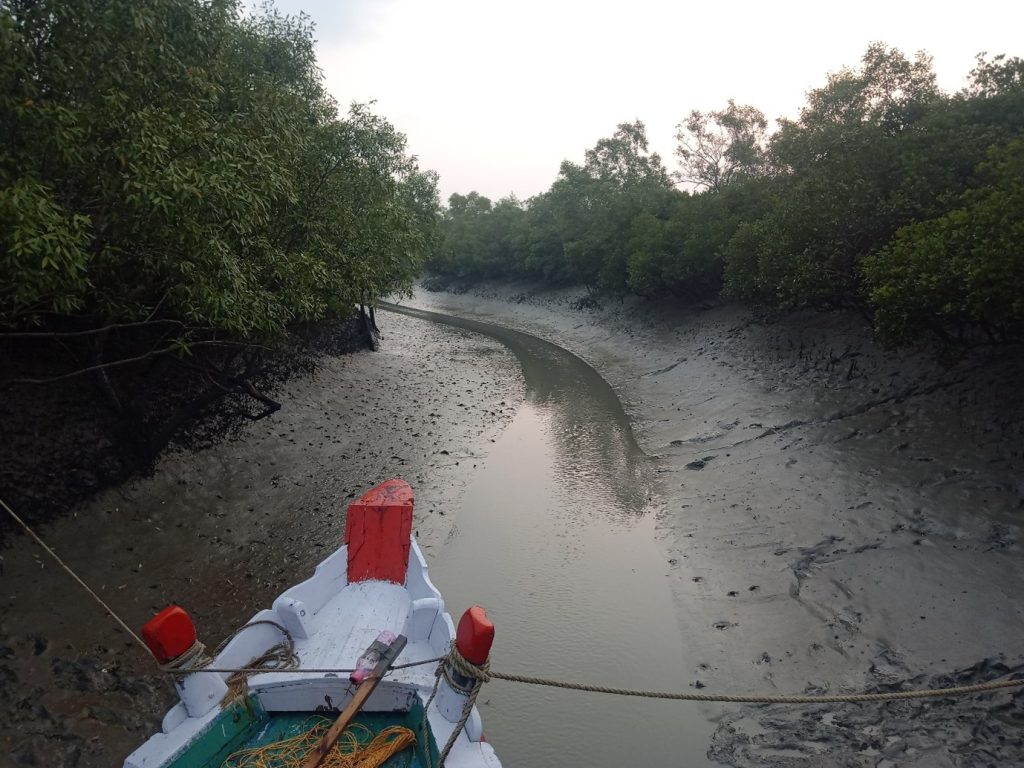
- Published in Departmental News, ENVS News, News, Research News
Industry Experts Inspire Future Leaders at the 2nd Success Mantra for Managers
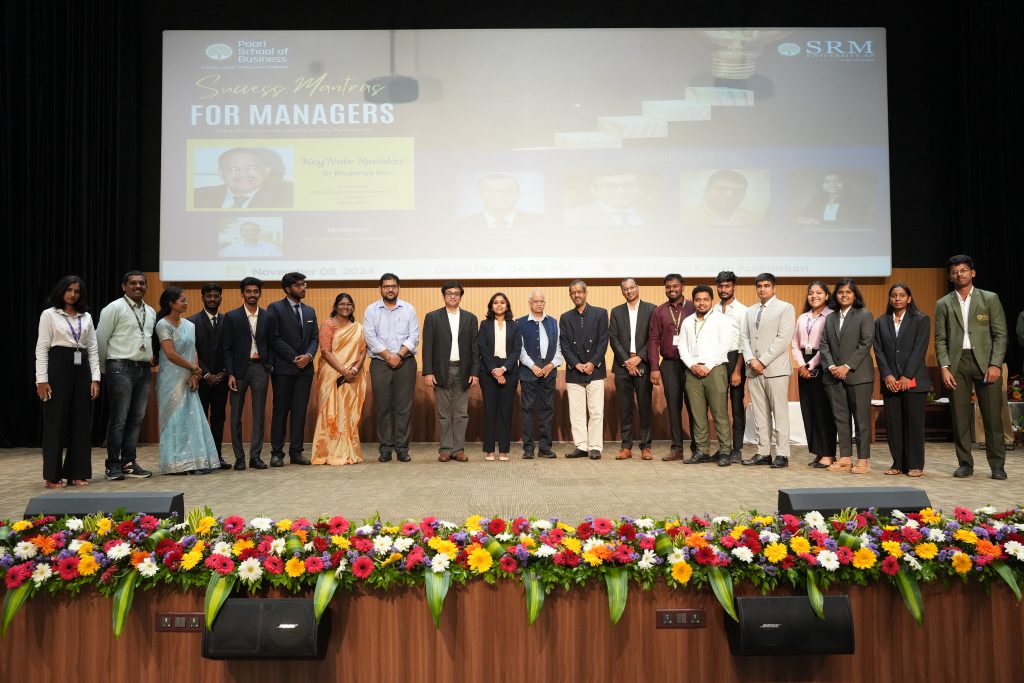
The Department of Management at the Paari School of Business conducted the second edition of its flagship event, “Success Mantra for Managers” (SMM), on November 08, 2024, uniting industry leaders to provide valuable insights, experiences, and professional guidance to students and faculty.
The event, moderated by Prof. Bharadwaj Sivakumar, Dean – Paari School of Business and Officiating Vice Chancellor, featured a distinguished panel that addressed the evolving landscape of management. Panellists shared their unique perspectives on effective leadership, motivation, and the importance of new-age skills in today’s corporate environment.
Ms Srimathi Sridharan, Director-BNY Mellon, remarked,” a manager’s role extends beyond mere target achievement; it fundamentally involves inspiring a team”. She highlighted the significance of kindness in leadership, drawing inspiration from her personal experience as well as the late industrialist and philanthropist, Mr Ratan Tata.
Mr Varun Gupta, Associate Director at PepsiCo, spoke passionately on the idea of Success. He stated, “Define Your Success, Yourself,” and stressed on the necessity for managers and leaders to possess a clear vision. He articulated how a well-defined personal and professional vision can guide managers in reaching their goals while empowering their teams.
Dr Bhujanga Rao, Chairman-KIMS Foundation & Research Centre and the key-note speaker for the discussion shared insightful reflections on his experience with Dr Abdul Kalam. He noted that compassion was a standout quality of Dr Kalam’s leadership, underlining that effective leadership encompasses understanding and supporting team members on both professional and personal levels.
Mr Suresh Ponnuru, Director-Analytics & Strategy Leader at Tiger Analytics, articulated the critical role of a leader in effectively communicating their team’s work to both superiors and clients. He highlighted the importance of perseverance and the ability to seize opportunities as they arise, which are essential traits for successful management.
Additionally, Mr Vinay Mantha, MD, Corporate & Investment Bank at J P Morgan Chase, conveyed that a manager should not only celebrate successes but also embrace failures as learning opportunities. This duality, he suggested, is fundamental to continuous growth and resilience in leadership.
In response to a question about handling success and failures at work, the panellists endorsed the significance of having an alternate plan—plan B if plan A fails. They collectively asserted that leaders must take responsibility for setbacks and implement corrective actions promptly.
The discussion further emphasised the need for managers to constantly evolve and acquire new skills, aligning with the event’s core theme that today’s managerial role must balance high performance with adaptability and empathy. Panellists shared personal anecdotes that underscored the joys and challenges of the profession.
The conversation delved into the relevance of emerging skills, such as artificial intelligence and the necessity for continuous learning, all deemed critical for future managers. Despite the focus on new-age competencies, the panellists unanimously vouched for the enduring value of traditional age-old skills like networking and ability to spot opportunities.
The event aimed at presenting the students with actionable insights and reinforced the vital importance of developing a versatile skill set in preparation for their careers, equipping them to thrive in a dynamic professional landscape.
- Published in Departmental News, News, Paari Current Happenings
Student Innovators Soar to New Heights at Drone Summit 2024
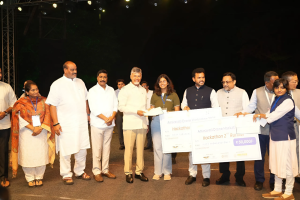 The Amravathi Drone Summit 2024 emerged as a landmark event, uniting industry leaders, trailblazers, and visionaries committed to revolutionising the future of drone technology. This varsity proudly showcased its expertise as the esteemed technology partner for this high-profile summit. The summit was charged with excitement as participants explored an array of drones through impressive exhibitions, engaging hackathons, and thought-provoking panel discussions.
The Amravathi Drone Summit 2024 emerged as a landmark event, uniting industry leaders, trailblazers, and visionaries committed to revolutionising the future of drone technology. This varsity proudly showcased its expertise as the esteemed technology partner for this high-profile summit. The summit was charged with excitement as participants explored an array of drones through impressive exhibitions, engaging hackathons, and thought-provoking panel discussions.
The Hackathon tested the skills and creativity of the brightest minds. Our very own team of second-year Civil Engineering students made waves by clinching the runner-up prize. The winning trio, Ms Nithya, Ms Sumaya, and Mr Hitesh, received a cash prize of ₹50,000. This achievement not only reflected their hard work and dedication but also showcased the exceptional talent nurtured at the university. Under the guidance of faculty members Dr Harish Puppala and Dr Pranav Peddintti, Assistant Professors in the Department of Civil Engineering, these students are poised to become future leaders in drone technology.
The summit also featured notable panel discussions that provided deeper insights into the evolving landscape of drone technology. Among the distinguished speakers was Vice Chancellor Prof. Manoj K. Arora, who served as a prominent panellist in the discussions. He was joined by other faculty members, including Dr Raviteja, Head of the Department of Civil Engineering, Dr Pranav Peddinti, and Dr Harish Puppala, Coordinators of the Centre for Drone Technology and the Centre for Geospatial Technology, respectively, who contributed their expertise on the latest developments in the industry.
With the remarkable performances of our students and the strategic discussions by our faculty, the Amravathi Drone Summit 2024 marks a bold step forward for drone technology.
- Published in CIVIL NEWS, Departmental News, News, Students Achievements


